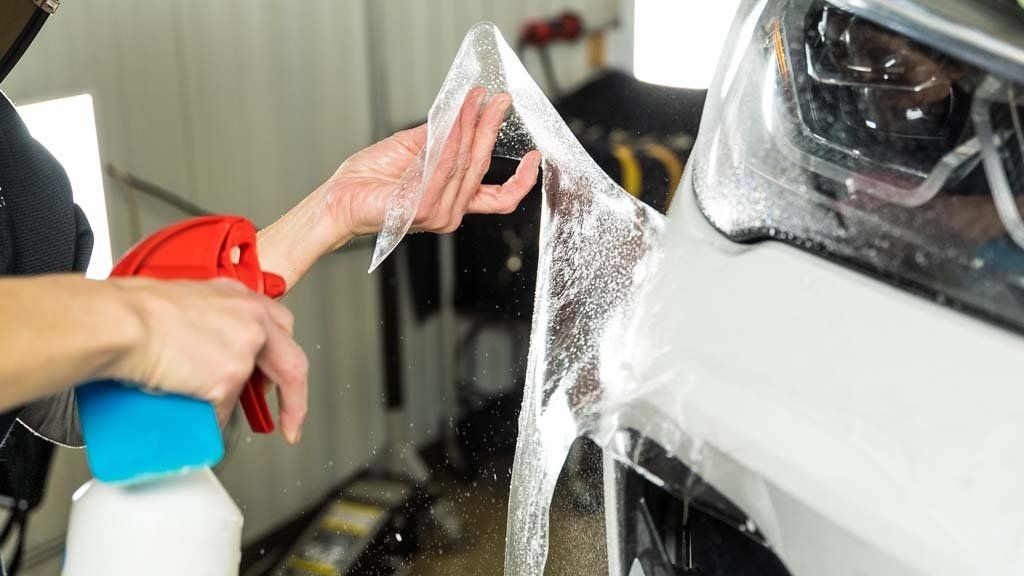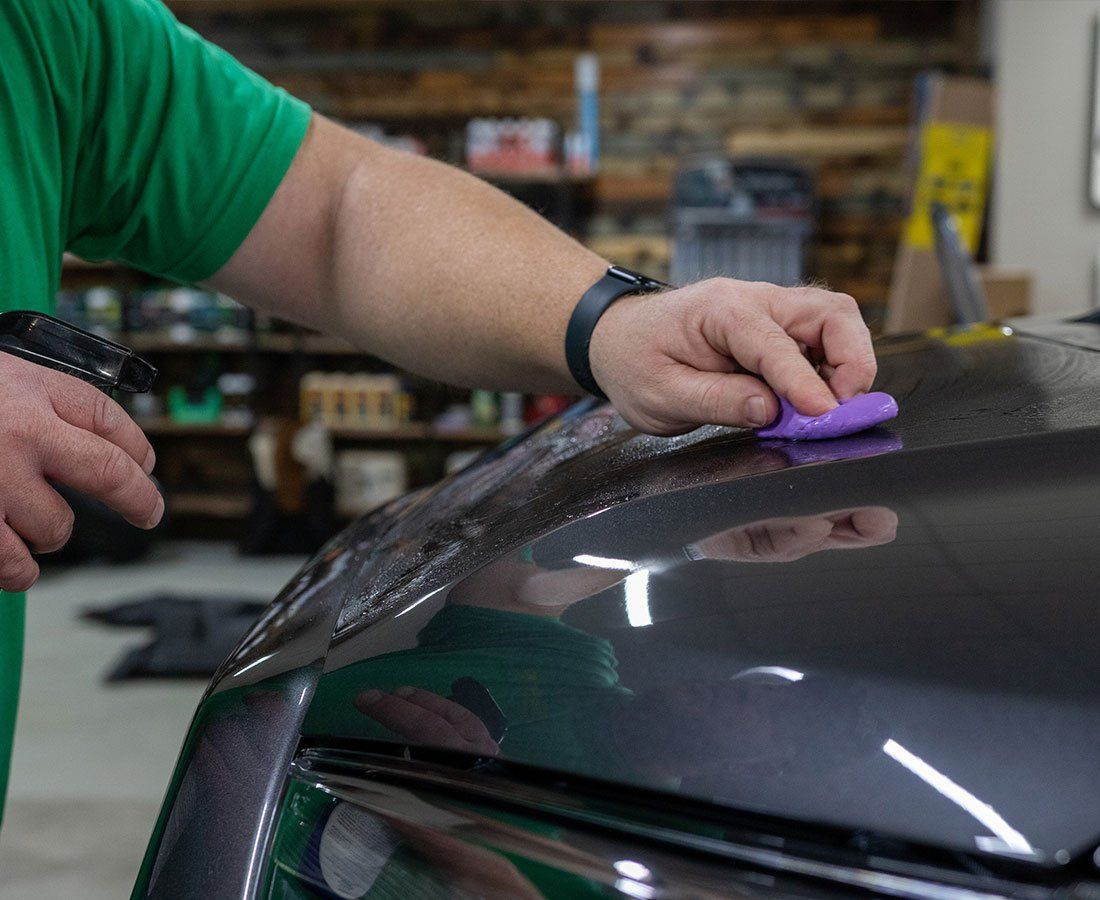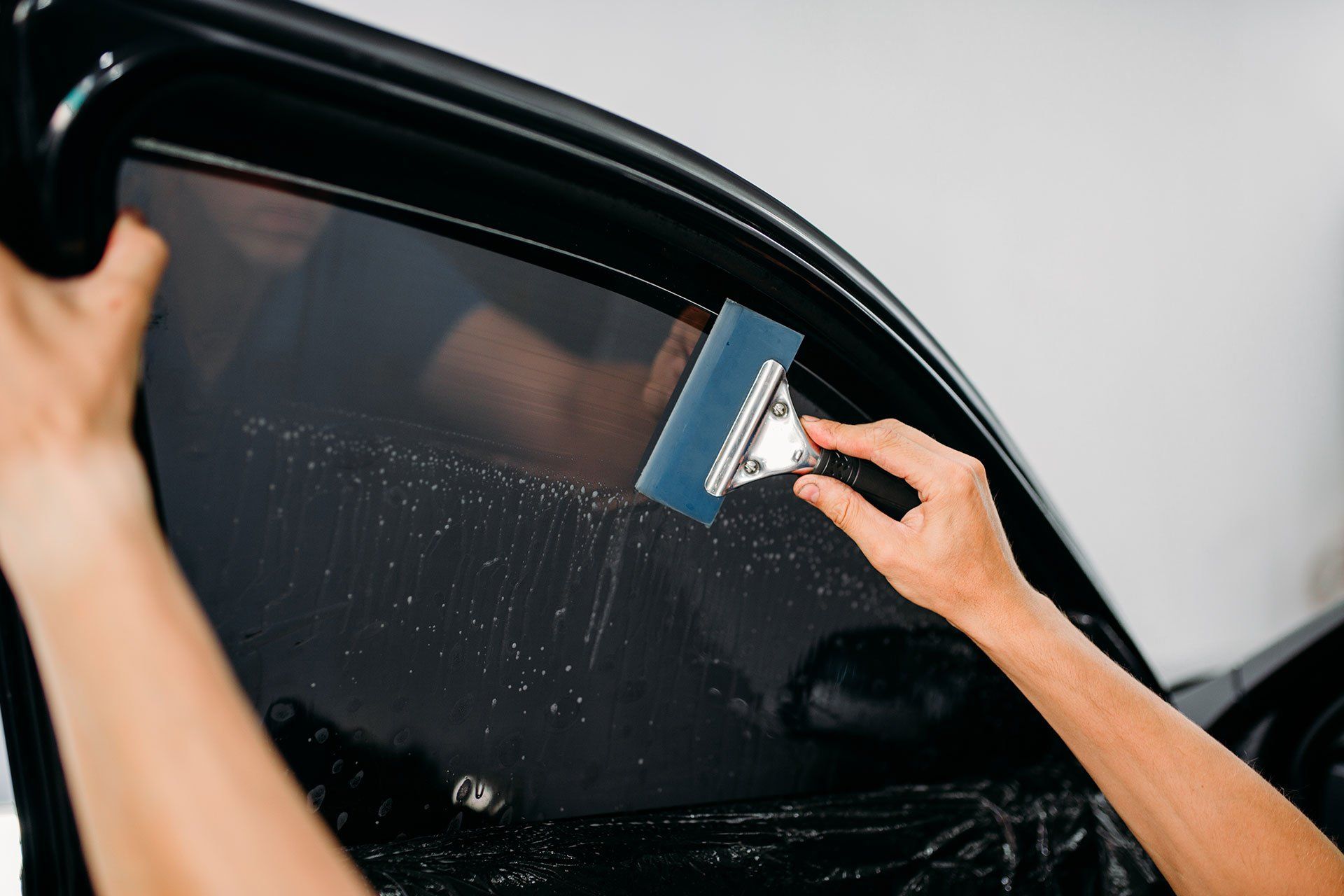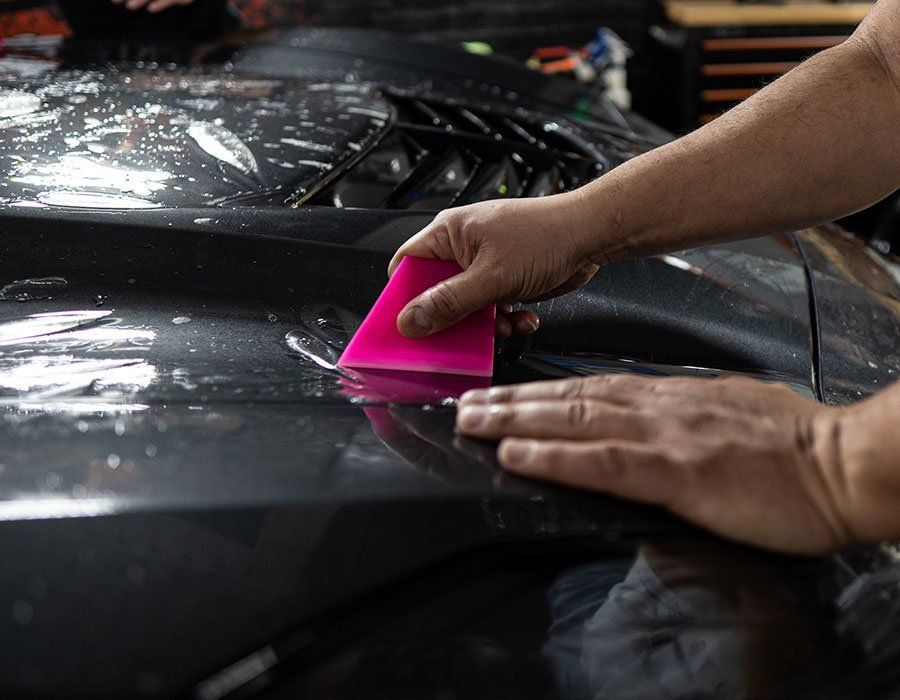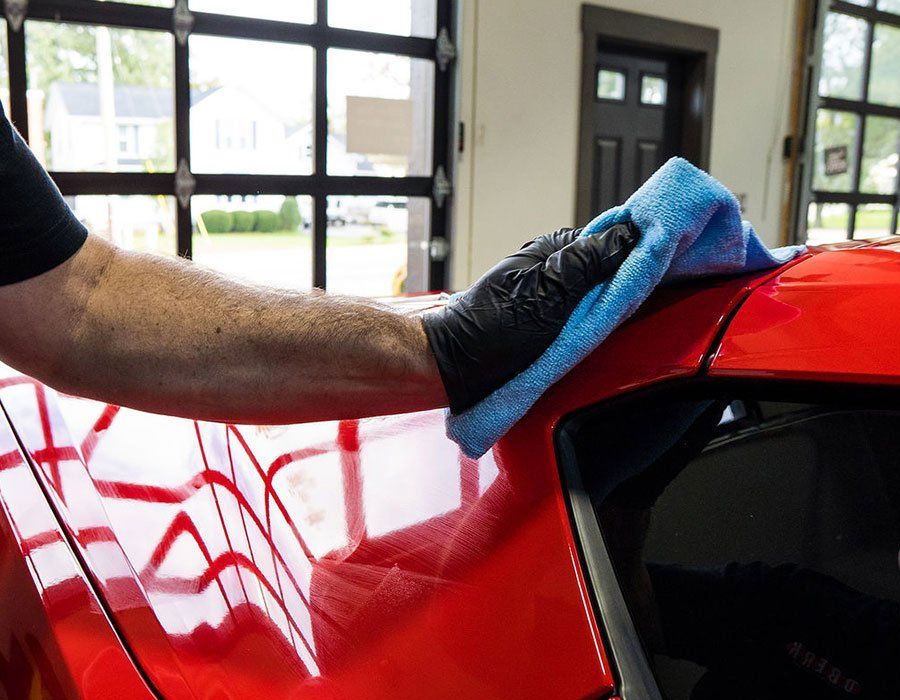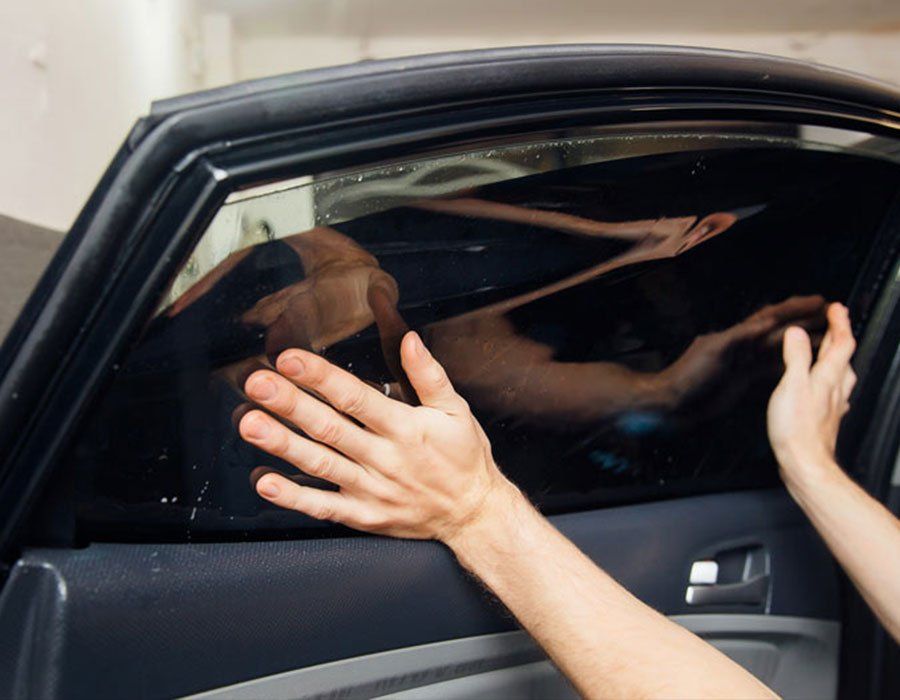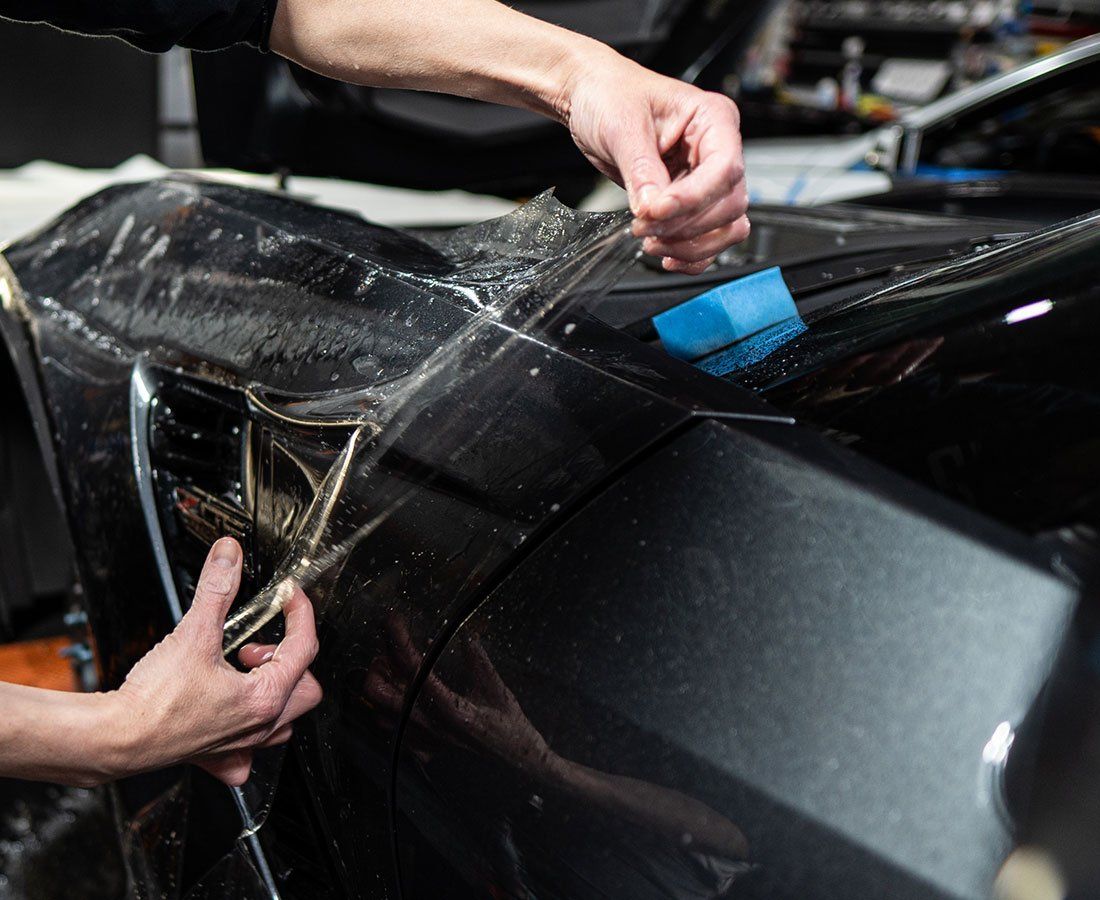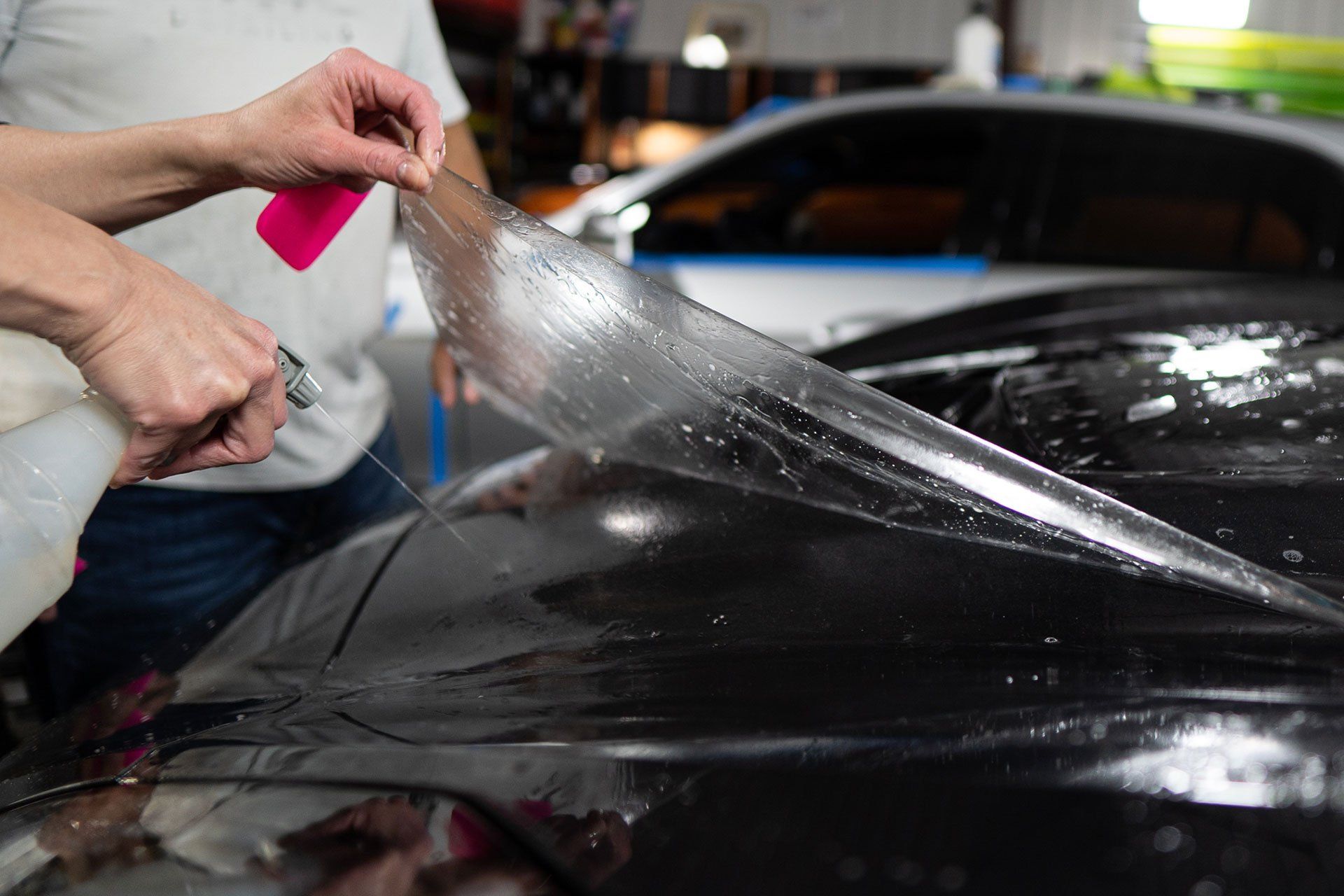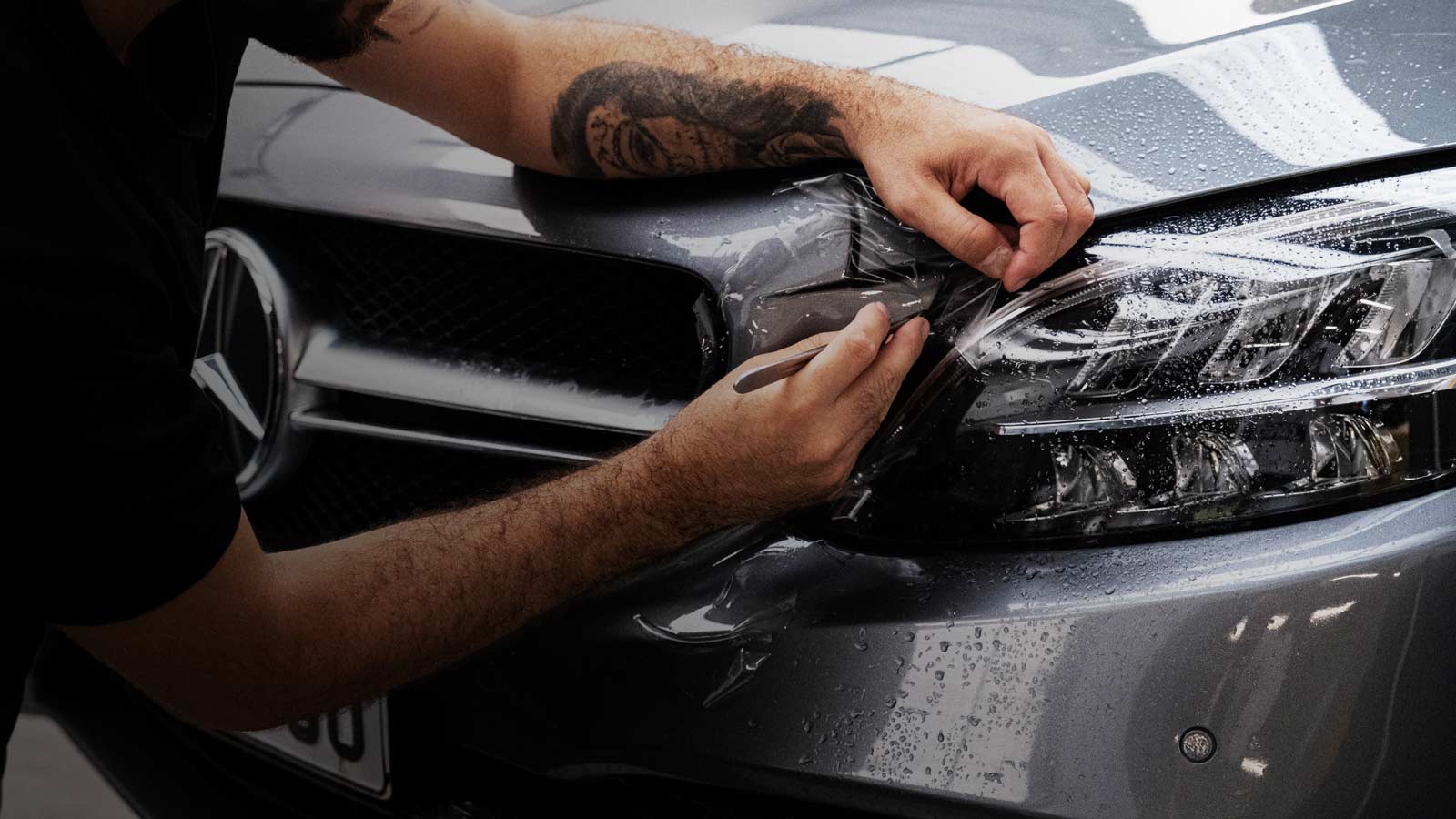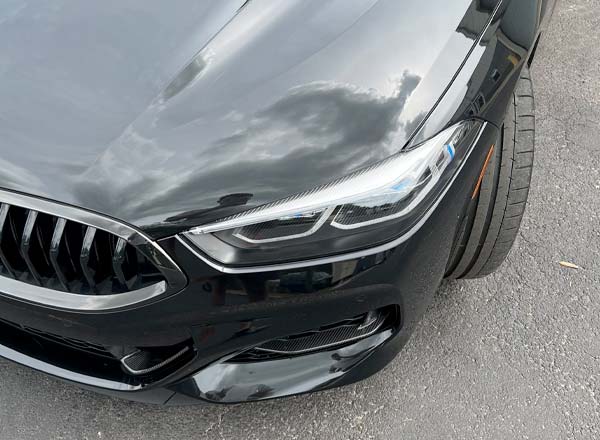Yes, paint protection film (PPF) shields are indeed a car's armor against environmental damage. Acting like an invisible barrier, they are specifically designed to fend off harmful elements like road debris, bug acids, bird droppings, and the sun's harsh rays. Surprisingly, these protective films also come with a distinct quality of self-healing, automatically fixing minor scratches and blemishes. So it’s not just about shielding your vehicle; it’s about maintaining that brand-new sparkle even after years on the road. Now let’s delve into understanding the function of PPF even better.
Paint Protection Film (PPF) shields your car from environmental contaminants by providing a physical barrier that prevents road debris, bug splatters, minor abrasions, and other pollutants from directly impacting the paint surface. Additionally, PPF offers UV and chemical resistance, protecting your vehicle's exterior from harm from environmental factors.
Understanding the Function of PPF
Paint Protection Film (PPF) is like a superhero cape for your car. It's made from thermoplastic urethane and is clear, so it won't change the color of your car. Instead, it shields your paint from the road's harsh environment.
Imagine your car as a brave knight standing guard against all kinds of enemies: chips thrown up by other cars' tires, bugs kamikaze-diving onto your hood, and the harmful rays of the sun beating down. PPF acts as armor, protecting your noble steed from these foes.
A Closer Look at PPF's Function
So, how does this modern marvel actually work? Let's break it down:
- Physical protection: It shields your car's exterior from stone chips, abrasions, and scratches caused by road debris. Think of it as a shield that takes a hit instead of your precious paint.
- Chemical protection: Not all enemies are visible to the eye. Insect acids, bird droppings, and harsh chemicals can wreak havoc on your car's paint. PPF forms an invisible barrier against these chemical assailants.
- UV protection: Just like sunscreen protects our skin, PPF shields your car from the damaging effects of UV rays, preventing discoloration and fading over time.
If you've ever seen a car with a worn-out and faded paint job, chances are it didn't have the protection of PPF. For longevity in your vehicle's appearance, maintaining its value, and keeping it protected from the elements, a layer of PPF is highly recommended. It's clear that the function of PPF goes beyond just shielding your car's paint; it provides comprehensive protection against a variety of environmental contaminants and physical damage. Whether you're driving in city traffic or cruising down open country roads, PPF keeps your car looking pristine.
PPF Protection against Specific Environmental Contaminants
- Road Debris: One of the most common threats to your car's paint job comes in the form of stone chips, scratches, and other damage caused by debris kicked up from the road while driving. PPF acts as a barrier against these potential paint-damaging offenders, preserving the pristine appearance of your vehicle. Imagine driving down a gravel-strewn road or behind a large truck on the highway. The tiny pebbles and debris that hit your car's front end at high speeds can cause significant damage if left unprotected. PPF acts as an invisible shield, absorbing the impact from these projectiles and preventing them from leaving their mark on your car's exterior.
- Bug Splatters: As you cruise down the road, insect remains and acids are bound to find their way onto your vehicle's surface. These seemingly harmless residues can actually eat into the paint, causing permanent damage over time. PPF offers a protective barrier against bug splatters, preserving the integrity of your car's paintwork. When traveling during warm months or in areas with heavy insect populations, bug splatters become more than just an eyesore—they can lead to costly paint repairs if not addressed promptly. PPF shields the paint from these acidic residues, ensuring that your car maintains its glossy finish despite encounters with unwelcome insects.
- Bird Droppings: Not only are bird droppings an unsightly nuisance, but they also pose a threat to your car's paint due to their corrosive nature. If not cleaned promptly, bird droppings can cause etching and discoloration on the surface of your vehicle. PPF acts as a safeguard against this corrosive effect, protecting the paint from lasting damage. Whether parked under a tree or simply out in the open, cars are often vulnerable to avian "bombs." PPF offers peace of mind by creating a barrier between the acidic constituents of bird droppings and your car's finish, providing time for proper cleanup without risking irreversible damage to the paint.
- UV Exposure: The sun's ultraviolet (UV) radiation can be harsh on a vehicle's paint, leading to fading and discoloration over time. PPF serves as a shield against these harmful effects, helping to maintain the color and shine of your car despite prolonged exposure to UV rays. Constant exposure to sunlight can gradually dull and fade your car's paint job, diminishing its visual appeal and overall value. By applying PPF, you're essentially outfitting your vehicle with an extra layer of defense against UV radiation, ensuring that it retains its luster even after enduring extended periods under the sun.
With these specific environmental contaminants in mind, it's evident that PPF provides comprehensive protection for your car's paintwork, safeguarding it from a wide array of potential hazards encountered during everyday use.
PPF Application Process
Imagine giving your car a suit of armor to shield it from the perils of the road. That's essentially what PPF does. But getting that armor on isn't as simple as layering it on like you would with a sticker. To ensure a flawless finish and long-lasting protection, the application process demands attention to detail and skill.
First things first, cleaning the surface is paramount. Any speck of dust or grit can interfere with the film's adhesion, causing imperfections in the application or, worse, creating points of vulnerability where the film might not fully protect the paint. This is why professional installers meticulously clean the surface before application, often using specialized cleaning agents to guarantee a pristine canvas for the film.
Once the surface is immaculate, it's time for precision cutting. The film needs to be cut precisely to fit the unique contours of your vehicle. This requires expert knowledge and cutting skills—picture a mix of artistry and exactness as installers work their magic to ensure that every nook and cranny is covered without overlapping or leaving any gaps. Professional application of the film is essential to prevent air bubbles and ensure proper adhesion for long-lasting protection. Proper adhesion is vital. If the film isn't applied correctly, it could peel or bubble over time, which not only looks unsightly but also compromises the protective function of the PPF.
Consider this scenario: if applied incorrectly, trapped air bubbles under the film can become potential weak spots. These weak areas may be susceptible to damage from various environmental pollutants or any abrasive debris encountered on the road. A professional installation greatly reduces these risks.
With each step being critical for optimal performance, finding trusted professionals for application is key. Our website offers a directory of certified installers whose expertise and training ensure that your PPF is flawlessly applied. In other words, having a skilled installer lined up ensures your vehicle receives top-notch treatment, safeguarding it against chips, scratches, and environmental wear and tear.
The meticulous process of applying PPF demands an eye for detail and professional expertise. With every step playing a crucial role in ensuring effective protection, choosing certified installers guarantees peace of mind and long-lasting safeguarding for your vehicle.
The Impact of PPF on Automotive Finish
When you invest in Paint Protection Film (PPF), you're not just safeguarding your vehicle against scratches, chips, and environmental contaminants; you're also preserving its glossy finish. The beauty of PPF lies in its ability to protect without altering the appearance of your car. When installed correctly, PPF is virtually invisible, ensuring that your vehicle's aesthetics remain unchanged while receiving the highest level of protection.
Car enthusiasts often worry that adding a protective film might alter the appearance of their vehicle. However, with modern advancements in PPF technology, such concerns are a thing of the past. The film is designed to be optically clear and highly conformable, meaning it can seamlessly adhere to the curves and contours of your car without any distortion or hazy appearance. This optical clarity ensures that the original glossy finish of your vehicle's paint is maintained and that any design elements or colors remain vibrant and unchanged.
In essence, PPF serves as an invisible shield, defending your car against road debris, bug splatters, minor abrasions, and UV rays while allowing the true beauty of your vehicle to shine through unaltered. The film's ability to provide top-notch protection without compromising the allure of your car makes it a popular choice among car owners who want to maintain their vehicle's pristine appearance for years to come.
For instance, imagine driving down a winding road with lush greenery all around. With PPF meticulously applied to your car's exterior, you can revel in the breathtaking scenery without fretting about stone chips or insect stains damaging your vehicle's flawless finish. This perfect balance between protection and aesthetics has made PPF a go-to solution for those who cherish their vehicles' pristine appearance. So, when you're considering whether PPF is right for you, rest assured that it can provide robust protection while keeping your car's aesthetics intact. Whether it's the glossy finish of a luxury sedan or the vibrant color of a sports car, PPF is designed to safeguard and preserve, ensuring that your vehicle looks exceptional year after year.
Maintenance Considerations for Vehicles with PPF
So now that you’ve invested in paint protection film (PPF) to safeguard your car's sensitive areas, it’s crucial to maintain it properly. Regularly washing your vehicle isn't just a cosmetic endeavor; it ensures that environmental contaminants don't corrode the film and damage your car's paint job underneath. Using a mild car wash solution and a soft microfiber cloth is ideal for keeping the film clean without causing abrasions or scratches.
When washing your car, always strive to use high-quality products that are formulated to be gentle on the PPF. Abrasive polishes and waxes should be avoided, as they can hamper the longevity and effectiveness of the film. Instead, opt for cleaners specifically designed for use on PPF. This will not only maintain the integrity of the film but also contribute to preserving the underlying paint, ensuring long-lasting protection.
The choice of maintenance products is just as essential as the frequency of cleaning. Using improper chemicals can not only damage the PPF but also diminish its protective capabilities and cause irreversible damage to your vehicle's exterior. As such, educating yourself on suitable maintenance products and methods through informative articles and guidelines provided by reputable sources is highly recommended. Ensuring that you're well-informed will help preserve the durability and functionality of the PPF, safeguarding your investment in both your car’s appearance and value.
Consider utilizing specialized ceramic coatings designed for use on PPF. These coatings enhance the hydrophobic properties of the film, making it easier to remove contaminants during regular washes. Moreover, ceramic coatings offer additional protection against UV rays and chemical exposure, ensuring comprehensive defense for your vehicle's exterior.
Proper maintenance doesn’t just preserve your car’s appearance; it upholds the structural integrity of the PPF itself. By adhering to prescribed cleaning procedures and using appropriate products, you can ensure that your PPF remains effective in shielding your vehicle from environmental pollutants and physical damage.
In essence, careful maintenance isn’t just about preserving appearances; it's about extending protection and shielding your investment for years to come.
Factors to Consider Before Choosing PPF
When choosing paint protection film (PPF) for your vehicle, there are a few vital factors to keep in mind. Let's take a closer look at two significant aspects: cost and warranty.
Cost
The cost of PPF installation can significantly vary depending on the size of your vehicle and the areas you want to cover. Larger vehicles naturally require more material, while covering additional areas such as the entire hood and bumpers will increase the overall cost as well. It's essential to carefully consider your budget and what you're willing to invest in protecting your vehicle. Some may opt for full coverage, prioritizing certain areas based on their specific needs and usage of the vehicle.
When evaluating cost, it's important to remember that quality and expertise come with a price. Although low-cost options may save money upfront, they could result in subpar installation and lower-quality film, leading to potential future costs for reinstallation or repairs. You can use our platform for cost comparison and get estimated quotes from various PPF installers, helping you make an informed financial decision based on your budget and vehicle protection requirements.
Warranty
The product's quality and the installation service rendered are both evidenced by the warranty that PPF installers offer. A comprehensive warranty not only provides extra assurance but also reflects the confidence the installer has in their work. When assessing different PPF providers, it's crucial to compare the duration and coverage of the warranties they offer. Longer warranties often indicate higher confidence in product performance and installation expertise.
For instance, a warranty covering both manufacturer defects in the film and workmanship issues with installation can be highly advantageous. Our platform facilitates a thorough comparison of warranties provided by various PPF installers, enabling you to make an informed decision based on the level of protection and support you desire for your vehicle.
These key factors will guide your decision-making process when selecting a PPF installer, ensuring that you receive high-quality protection aligned with both your needs and budget. In conclusion, making an informed decision regarding your paint protection film ensures comprehensive protection for your vehicle while also providing peace of mind. By understanding the factors involved, you can make a choice that suits both your car and your budget.
Optimal Precision in Paint Protection Film Services in Tampa, FL
Seeking the highest standard of protection for your vehicle's paint in Tampa, FL? Look no further than Auto Film Guys, where we specialize in delivering optimal precision in Paint Protection Film (PPF) services. With meticulous attention to detail and a commitment to excellence, our expert team ensures that your vehicle receives the utmost care and protection against scratches, chips, and other common road hazards. Our advanced PPF techniques provide a seamless, barely noticeable layer of defense that preserves your car's finish while maintaining its original aesthetics. Don't settle for anything less than perfection; trust Auto Film Guys to safeguard your vehicle with precision and expertise. Contact us today to schedule your PPF service and give your car the protection it deserves.
The Auto Film Guys Blog
